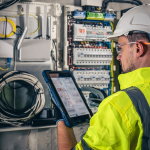Community energy projects, a rapidly growing sector in the UK, are empowering local residents in unprecedented ways. These projects, often spearheaded by local communities, aim to generate energy through renewable sources like wind, solar, and hydro power. Not only do they contribute to the fight against climate change, but they also foster a sense of community and give local residents control over their energy sources. So how exactly do these projects empower local residents? Let’s delve into the details.
Local Employment Opportunities
Community energy projects are not only about generating renewable energy; they are also significant sources of local employment. When a new project starts in a community, it needs people to install and maintain infrastructure, conduct environmental assessment activities, and manage the project. This means job opportunities for local residents.
Topic to read : Unlock relaxation: 3 lofi guitar chord progressions to try
Community energy projects often prefer hiring locally, to keep the economic benefits within the community. By creating jobs, these projects contribute to local economic growth and stability. These jobs also often offer training opportunities, equipping local residents with the skills and experience they need to embark on new careers in the renewable energy sector.
Reducing Energy Bills
With community energy projects, local residents have the opportunity to produce their own energy. This is a significant benefit, particularly in an era with growing concerns about energy prices.
Have you seen this : Master arabic: your guide to speaking fluently now
By generating their own energy, communities can reduce their reliance on the national grid, which often relies on fossil fuels. This means that they are less impacted by fluctuations in energy prices, as they can produce and consume their own energy. In the long run, this can lead to significant savings on energy bills.
Moreover, in some cases, communities are able to sell excess energy back to the grid, creating an additional income stream for the community.
Increasing Energy Security
Community energy projects also increase energy security. Energy security is the uninterrupted availability of energy sources at an affordable price and it is a growing concern in the UK.
By generating their own energy, communities are less dependent on external energy sources, which are often susceptible to political instability or supply chain disruptions. Community energy projects, therefore, provide a buffer against such uncertainties, ensuring that the local community has a reliable energy source.
Instilling a Sense of Ownership and Responsibility
Community energy projects instill a sense of ownership and responsibility among local residents. They are not just passive consumers of energy; they are actively involved in its generation. This gives them a stake in the project and instills a sense of responsibility towards its success.
Furthermore, the process of planning and implementing a community energy project often involves extensive dialogue and consultation within the community. This fosters a sense of community spirit and collaboration, as residents work together towards a common goal.
Educating and Raising Awareness
Finally, community energy projects have an important role in educating local residents about energy issues and raising awareness about the importance of renewable energy.
By getting involved in these projects, residents learn about energy generation and consumption, the impact of energy use on the environment, and the benefits of renewable energy. This knowledge is not only valuable in itself, but it also equips residents to make more informed decisions about their own energy use.
Moreover, these projects often have a ripple effect, inspiring other communities to pursue their own community energy projects. In this way, they contribute to a wider shift towards renewable energy.
In summary, community energy projects in the UK are empowering local residents in multiple ways. They create local jobs, reduce energy bills, increase energy security, foster community spirit, and educate residents about energy issues. As these projects continue to grow, they are likely to play an increasingly important role in the UK’s energy landscape.
Fostering Social Inclusion and Building Community Resilience
Community energy projects are not just about energy; they are also about people and their relationships. These projects create a platform for social inclusion, bringing together people from different backgrounds and fostering a sense of cohesion. In an era where loneliness and social isolation are prevalent issues, community energy projects can play a vital role in building stronger, more connected communities.
The shared goal of generating clean energy brings people together, creating a common purpose and a collective identity. This can help to break down barriers and promote social integration. Moreover, the collaborative nature of these projects encourages mutual support and the sharing of skills and knowledge, which can further strengthen social bonds.
Furthermore, community energy projects can also help to build resilience at a community level. The skills and knowledge gained through these projects can be transferred to other areas of community life, helping to equip residents with the tools they need to respond to other challenges and crises. For example, the experience of managing a project and mobilising resources could be invaluable in the event of a natural disaster or other community crisis.
In addition, the economic benefits of these projects, including job creation and reduced energy bills, can help to alleviate poverty and economic inequality within communities. This can contribute to building a more resilient and inclusive community, capable of withstanding social and economic shocks.
Promoting Environmental Sustainability
Community energy projects are a powerful tool for promoting environmental sustainability at a local level. By harnessing renewable energy sources, these projects reduce the community’s reliance on fossil fuels, contributing to the reduction of greenhouse gas emissions.
Furthermore, these projects often involve measures to improve energy efficiency, such as installing insulation or upgrading heating systems. This not only reduces energy consumption and carbon emissions, but also leads to more comfortable, healthier homes.
The environmental benefits of these projects can also have a positive impact on local biodiversity. For example, the creation of new habitats around wind turbines or solar panels can provide a boost to local wildlife. In addition, the increased awareness and understanding of environmental issues that these projects promote can lead to further actions to protect and enhance the local environment.
Finally, community energy projects can also contribute to the wider transition to a more sustainable, low-carbon economy. By demonstrating the feasibility and benefits of renewable energy, these projects can inspire other communities and influence policy at a regional and national level.
Conclusion: Empowerment Through Community Energy Projects
Community energy projects in the UK are a prime example of how local initiatives can have far-reaching impacts. These projects are not just about generating renewable energy, but also about empowerment – giving local residents control over their energy sources, providing job opportunities, reducing energy bills, and fostering social inclusion and community resilience.
Moreover, these projects play a pivotal role in educating the community about the importance of renewable energy and promoting environmental sustainability. They are a critical part of the UK’s strategy to combat climate change and transition to a more sustainable, low-carbon economy.
As the sector continues to grow and more communities begin to harness the power of renewable energy, the social and environmental benefits of these projects will only become more pronounced. Community energy projects are a testament to the power of collective action and showcase the pivotal role of local communities in driving social and environmental change. They stand as a beacon of hope and a model for sustainable development, not just in the UK, but around the world.






